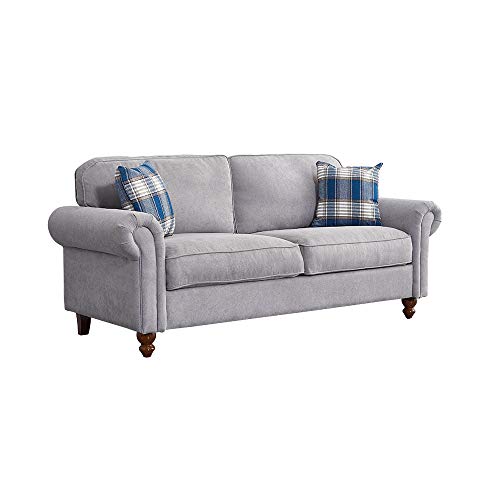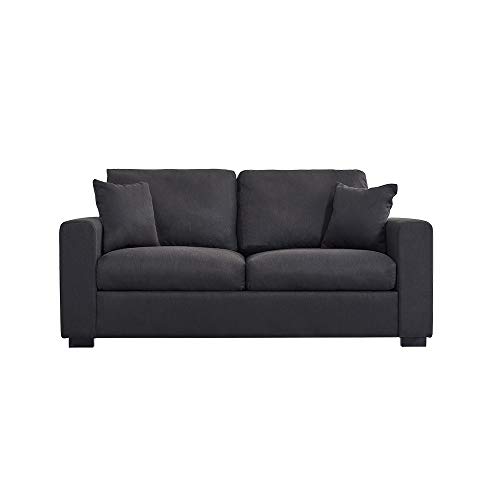Guide To 2 Seater Leather And Fabric Sofa: The Intermediate Guide To 2 Seater Leather And Fabric Sofa
작성자 정보
- Darin Pung 작성
- 작성일
본문
 Choosing Between a 2 seater fabric sofa sale 2 seater fabric sofas uk leather and fabric sofa [learn more about Glamorouslengths]
Choosing Between a 2 seater fabric sofa sale 2 seater fabric sofas uk leather and fabric sofa [learn more about Glamorouslengths]It isn't easy to decide between fabric and leather when you are looking for a new couch. This is particularly relevant if you're new to furniture experience.
If you have kids or live in an apartment The leather option might be right for you. It's easy to clean and it is stylish in all homes.
Comfort
A sofa is the focal element of the majority of living areas and is a major purchase. You want one that is comfortable to lounge for hours and is stylish, blends with your room style and can last for a long time. Deciding between leather or fabric isn't easy It is crucial to assess your priorities as well as your lifestyle and budget prior to making a choice.
Leather is a luxurious material with a luxurious feel and radiates class in a home. It is durable and stain-resistant, it is insensitive to pets and children, and will last for a long time if given proper care. However, it can be more expensive initially and will require regular conditioning to prevent peeling or cracking.
Fabric sofas are available in a broad range of styles, colours and fabrics. They are often more affordable than leather sofas. They are also more comfortable and more cosy, and can be "broken in" right from the beginning. They may be more susceptible to dust mites and pet hairs and require more frequent cleaning. However, with new technologies and performance fabrics, there are now hypoallergenic options to choose from.
The durability of a sofa made of fabric will depend on the quality of the material However, the majority of fabrics can expect to last for up to 15 years if they are properly taken care of. Regular vacuuming and deep-cleaning will ensure that the 2 seater fabric tub sofa is free of stains, odours and dirt. They also can be stretched and flatten as time passes, just as leather. A majority of couches made of fabric are treated with chemicals that make them stain-resistant and flame retardant. These couches release volatile organic chemicals that may cause allergic reactions and alter the quality of indoor air.
Durability
When purchasing sofas, we usually opt for fabrics that are extremely durable, as this is important if you have pets and children. You don't want to spend a lot upfront and be left with buyer's remorse after the first spill or crowbarred claws. Also you don't want to purchase something that is cheap but doesn't stand up to regular use.
Leather, meanwhile is extremely durable and has an incredible strength for tears. It can last up to four times longer than fabric and is innately resistant to fading, cracking and flaking. It can be treated in order to restore its natural oils, and make it appear new.
Fabrics are cheaper and come in a variety of colors, patterns and textures that can be adjusted to any interior design scheme. Fabrics are less difficult to clean and can stand up to some wear and tear. However, they can fade over time and are more prone to moisture.
Microfiber is tough and comes in a variety of colors. However, it may not be as durable as genuine leather. It might also not be able to withstand scratches. But, it's an ideal choice for families because of its resilience to spills and stains and is easy to clean typically with a damp cloth.
Suede however, is difficult to keep clean and can be more difficult to repair than leather. It is also prone to losing its shape if not regularly conditioned and can feel quite rough to the roughness of the. It's also a very thin material and so might not be as strong as cowhide or sheepskin leather.
Allergens
Fabrics can have a significant impact on allergies. It is crucial to know what the different options do. Fabrics are known to hold allergens, such as dust mites and pet dander which can trigger symptoms like asthma, hay fever rhinitis and eczema. This is because these fabrics act as an ideal environment to allow them to grow.
The leather, however, does not accumulate the allergens and offers a constant level of comfort, no matter the season. However, it can also be a trigger for skin irritation, especially in those suffering from contact dermatitis and are sensitive to the chemicals that are used in the tanning process. Using vegetable-tanned leather as well as maintaining an active skincare routine are essential for mitigating skin reactions.
Leather and fabric sofas are durable, but the material you select will have a significant effect on how your couch is able to stand up to wear. A high-quality material will resist shrinking or fading and can withstand spills or body oils as well as daily use. Modern fabric couches are often equipped with stain-resistant treatments to make cleaning easy.
You may not be able completely to prevent an allergic reaction to the leather in your couch however, you can to reduce allergens by keeping a lint-roller nearby and regularly vacuum your living space. This will reduce the amount dirt, pet hair, and dust mites that are a nuisance on your sofa. If you are still experiencing allergies, consider replacing your sofa with a allergy-friendly model. For example, a sofa made of vinyl or synthetic leather will be less likely to trap pet dander or dust mites. It will also help you breathe better.
Scratches
When buying a leather sofa, it is important to think about how much wear and tear you can expect from it. The finish, colour and the quality of the leather are all crucial aspects in how long a couch will last. You must also ensure it's sturdy enough to withstand spillages or other accidents. This can be achieved by selecting a sofa with a solid wood frame and high density foam cushions.
Leather can be scratched by a variety of reasons such as stretching it, marking territory or reliving tension. Scratches are of varying severity. They can range from minor surface scratches, to severe punctures or cuts. Small scratches can be repaired by using a leather conditioner. This can help restore the balance of moisture and oil in the leather, which will prevent drying out and cracking. The amount of damage will determine the treatment required.
It is a good idea for cat owners to trim their cats' nails on a regular basis. This will prevent them from scratching on the couch. You can also stop the scratching behavior by providing them with scratching surfaces such as sisal rope or cardboard. Another option is to use a pet-safe furniture polish which can be applied using an abrasive cloth on the affected area.
 In addition to cleaning your leather couch regularly, it's a good idea to keep it out of direct sunlight and heat sources because this could dry out the leather. This can cause cracks in the leather. Repairing this can be difficult and requires an overhaul. It is recommended to apply a leather conditioner to keep the leather soft.
In addition to cleaning your leather couch regularly, it's a good idea to keep it out of direct sunlight and heat sources because this could dry out the leather. This can cause cracks in the leather. Repairing this can be difficult and requires an overhaul. It is recommended to apply a leather conditioner to keep the leather soft.Smell
A leather couch is known to have a distinct smell than fabric 2 seater. It's because leather is porous, and absorbs odors such as body odors, smoke or food. The good thing is that odors will usually disappear over time, particularly if you use a non-toxic, fragrance free cleaner.
However, if the odor is intense, it could indicate that there's something wrong with the foam. This is usually caused by the chemical off-gassing that occurs from petroleum-based polyurethane. If you're worried about this, consider couches that are CertiPUR-US certified or natural latex foams.
Another method to detect fake leather is to feel for bumps or textures on the back of the sofa. This is a telltale sign that it's bonded, not genuine top grain leather. It is also possible to conduct an inspection of the interior by tilting the couch to its side to check if you see any exposed upholstery backing. If you can smell it, it's probably a synthetic material, such as polyurethane or polyester. These types of materials will have a different scent than leather.
A leather sofa is more susceptible to picking up smells, the best way to prevent this is by regularly cleaning your sofa. This will help keep it looking its best and smelling great as well as preventing it from becoming stiff or cracked over time. Start by vacuuming and dusting your couch and then wiping it clean with a dry cloth and baking soda (a good natural way to get rid of the smell). It is recommended to do this at least every two weeks or more in order to get rid of any dirt and dust build-up. Then, apply a leather conditioner in order to preserve your sofa's color and texture.
관련자료
-
이전작성일 2024.11.20 22:38
-
다음
댓글 0
등록된 댓글이 없습니다.
